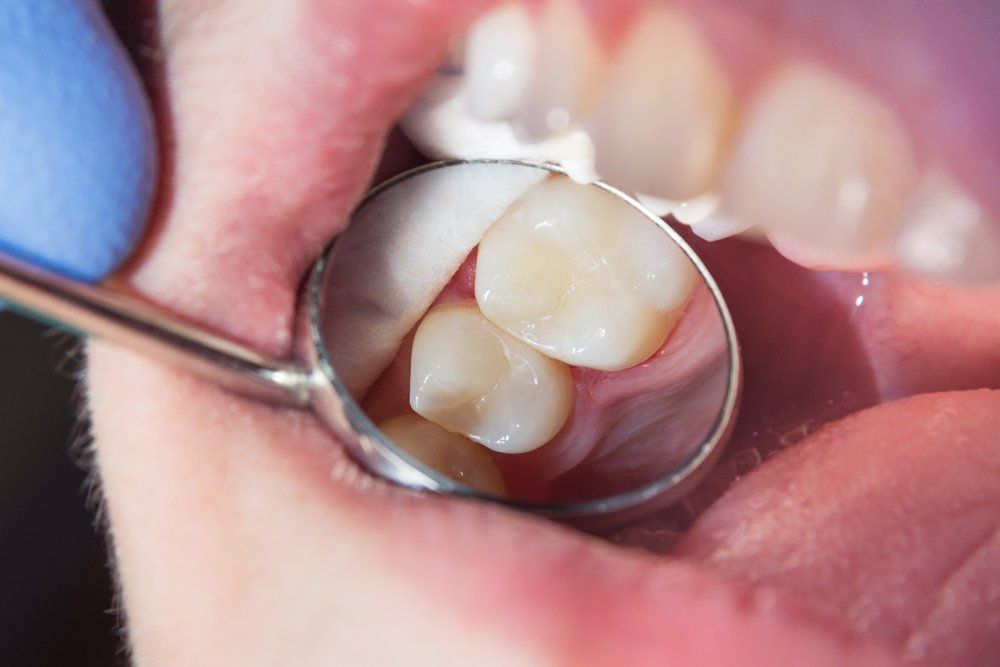Serving Statesville and the surrounding areas since 1998
Call Now to Schedule an Appointment
It’s Our Business to Make You Smile
A Guide to Dental Fillings
Americans typically accumulate several permanent fillings by the age of 64, with 92 percent of them experiencing some form of dental caries (tooth decay). Unless you belong to the fortunate few, you either have a cavity that needs filling or you've had fillings before.
If you received most of your fillings at a young age, your parents may have made more of the decisions regarding that process than you did. As an adult, it pays to understand the details of this routine but necessary procedure. Discover some key points to remember.
Fillings Can Prevent or Resolve Serious Problems
Tooth decay begins when a sticky substance known as plaque builds up on tooth enamel. Bacteria feed on the plaque, producing acids that bind to the plaque and etch their way into the enamel, eventually creating a small hole called a cavity.
If a cavity extends all the way through the enamel to the tooth's interior structures, serious problems can develop. Infection of the nerve pulp can lead to acute pain when you chew or expose the tooth to hot/cold substances. Additional complications may include tooth fractures, jaw infections, or tooth loss.
When you fill a decayed tooth, your dentist puts a stop to the decay, pain, and disease concerns. The filling process eliminates the bacteria along with the diseased tissue, while the filling itself protects the sensitive nerve tissue against pain and future bacterial infiltration through that part of the enamel.
Fillings Involve a Multi-Step Process
If you experience cavity-related pain, or if a probable cavity appears during a routine dental exam, the dentist will take X-rays to confirm the diagnosis and examine the depth of the cavity. A local anesthetic numbs the appropriate portion of the mouth to prepare you for the filling procedure.
Next, the dentist uses a specialized tool to remove the decayed area of the tooth. Once the tooth has had all of its decay removed and received a thorough cleaning, the dentist will fill the hole made by the removal process with a hard, sterile material. Some fillings go through additional steps such as light-based hardening.
Fillings Come in a Variety of Materials
Your dentist may recommend different types of filling materials based on your budget, cosmetic considerations, and the location of the tooth undergoing treatment. Common choices include amalgam, precious metals, tooth-colored composites, and ceramics.
Amalgam leaves a dark spot on a tooth, but it also offers the least expensive filling option. Its strength and durability make it a reasonable choice for less visible chewing surfaces such as molars. At the other end of the price range, gold fillings offer optimal strength, although they can sometimes react uncomfortably to heat and cold.
Ceramics offer a sensible compromise between aesthetics and function. In exchange for a relatively high cost, you get all-but-invisible fillings with great durability. Tooth-colored composite resin makes more sense for front tooth surfaces, since its durability can't match its discreet, realistic looks.
In some cases, your dentist may recommend a filling material called glass ionomer. This material includes a fluoride component that offers additional protection for the tooth enamel. This type of filling may not hold up to chewing as well as other materials, but it can prove highly useful for cavities below the gumline.
Fillings Don't Last Forever
Don't assume that a filling represents a permanent, one-time fix for the tooth it protects. Other cavities can form on the same tooth in different locations, with the resulting decay calling for another filling, a permanent crown, or some other response.
Fillings can last for many years, but they can also break or fracture when subjected to strong biting forces, impact injuries, or particularly hard foods. Decay or wear around the cavity may allow the cavity to loosen and fall out. Replace a failed cavity as soon as possible to prevent infection and additional tooth damage.
If you have dental pain or see what looks like a cavity, get the professional advice and expertise your teeth need. Contact the office of Joseph M. Perry D.D.S., P.A.
Phone: 704-873-6451 | Email: info@drjosephperry.com | Address: 1116 Davie Ave. Statesville, NC 28677
Joseph M. Perry D.D.S. P.A. | Licensed | Insured | In Business Since 1998
Business Hours
- Mon - Thu
- -
- Fri - Sun
- Closed
Closed for Lunch From: 1:15 AM - 2:15 PM




Testimonials

Slide title
Write your caption hereButton
Slide title
Write your caption hereButton
Slide title
Write your caption hereButton

Slide title
Write your caption hereButton
Slide title
Write your caption hereButton
Slide title
Write your caption hereButton

